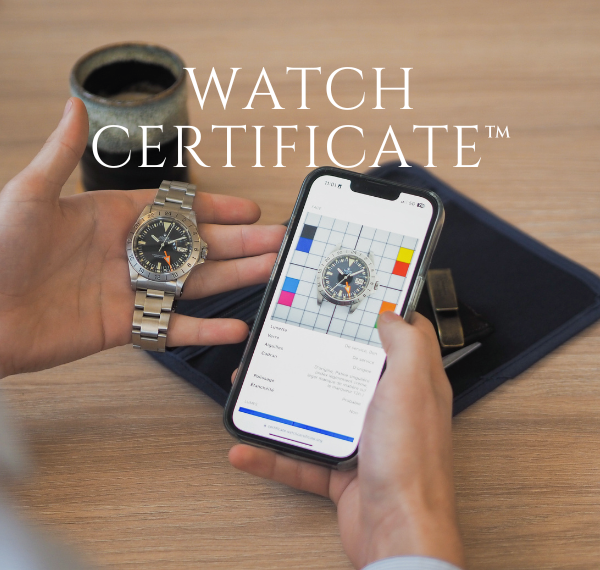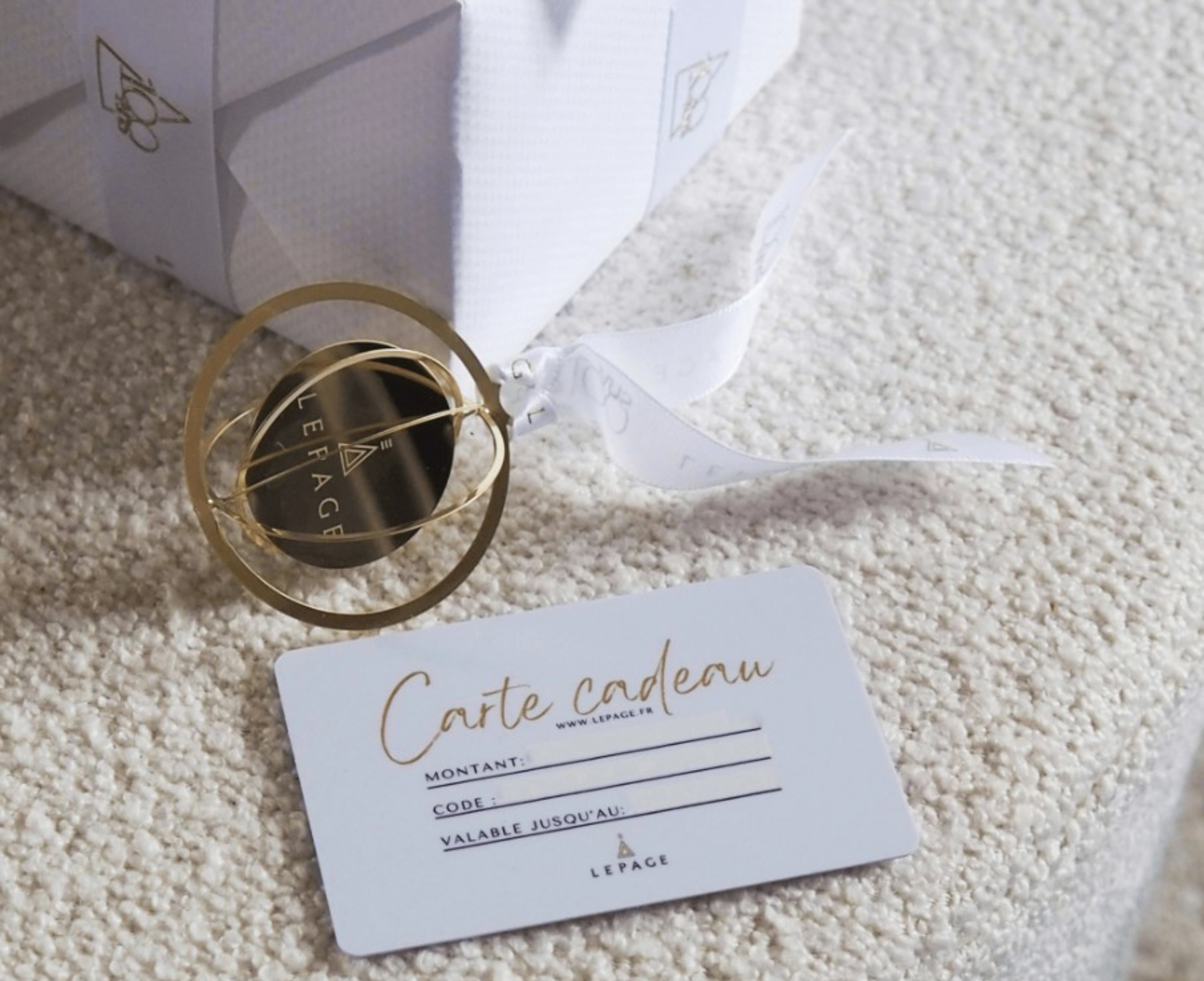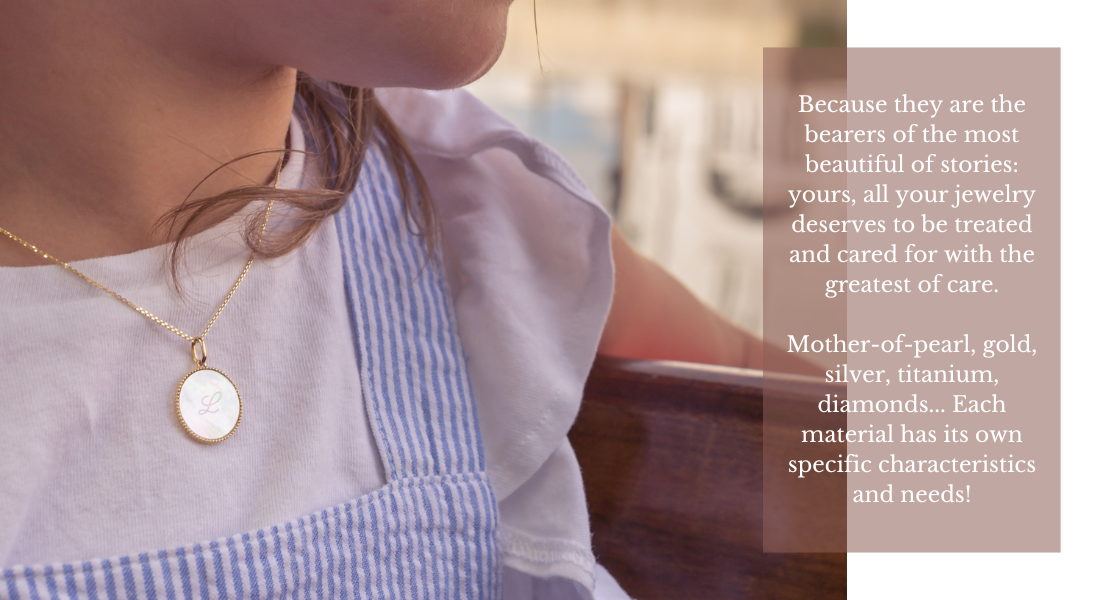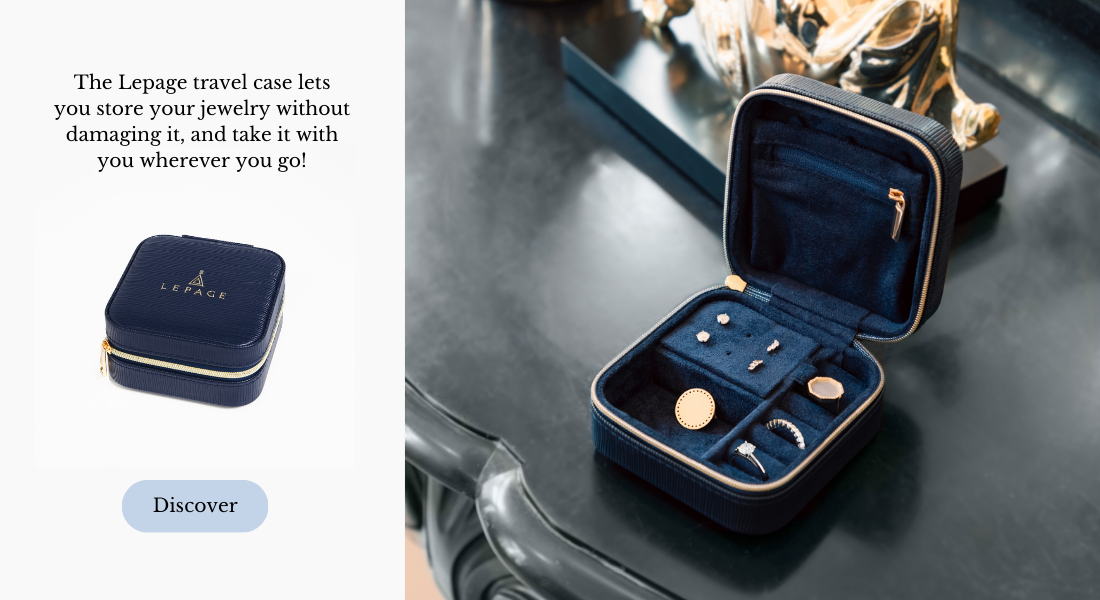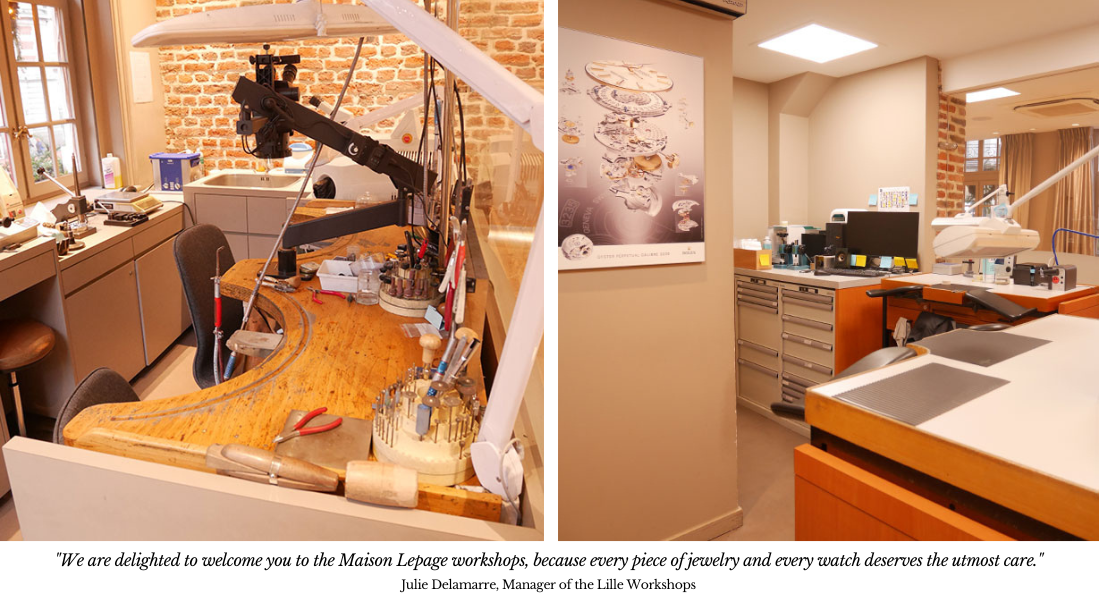Introduction
Jewelry, whether crafted entirely from noble metals or adorned with precious stones, is not just an aesthetic ornament, but an object that conveys history, significant moments and emotions. Some jewelry is therefore worn on a daily basis, and it's only natural that exposure to the elements and the passage of time should cause its initial condition to deteriorate somewhat. What's more, the fact that the jewel you're wearing was made by a great name in the jewelry industry and is therefore of high quality doesn't mean it won't get damaged. It's just as important to pay attention to these fine creations as to pieces signed by less prestigious brands.
Worn in everyday life, rings, bracelets, necklaces and earrings tend to be subjected to a variety of environmental conditions, including humidity, heat, dirt, chemicals (more or less) and light shocks. The accumulation of dust and residues can dull their surface, reducing their natural lustre and even weakening them. Therefore, regular maintenance, such as cleaning, polishing or rhodium-plating, as well as careful storage and carrying, are essential to preserve the original appearance and prevent the deterioration of your cherished jewelry pieces.
Precious materials and their care
The precious nature of jewelry lies largely in the materials used to create it. Noble metals and precious or semi-precious stones are carefully chosen for their beauty and durability. However, to maintain their appearance and quality over time, proper care is essential.
Precious metals
Metals such as gold, silver and platinum are often used in precious jewelry because of their natural lustre and resistance to corrosion. At Lepage, all the jewelry we make is crafted in 18k gold , one of the finest qualities of gold alloy to be found in jewelry. This gold is generally recycled gold , to reflect a more responsible approach to jewelry, an element that is particularly close to our hearts.
The Jewellery Maisons we partner and retailer also work with superior quality metals, such as 750 gold, 925 silver and 950 platinum. This guarantee of quality enables us to offer our customers jewelry that meets the exacting standards of excellence for which Lepage has been renowned for over a hundred years. However, even these noble and resistant metals can suffer damage over time due to exposure to air, humidity and chemicals, but also to the shocks and friction to which they may be exposed. So, even when fashioned from the most resistant and beautiful of metals, the jewelry will end up being damaged, and will have to pass through the hands of professionals to regain its lustre and shine.
So don't worry if you find a ding or a scratch on one of your jewelry pieces. Usually, this small defect can be repaired, and your ring, bracelet, earring or necklace will be restored to its original beauty.
Cleaning and polishing to restore the original shine
The cleaning regular care of your jewelry is crucial to maintaining its original brilliance. For gold, silver and platinum jewelry, gentle cleaning with a soft bristle brush, lukewarm water and Marseille soap can remove accumulated dirt and residue. Avoid abrasive cleaners that could damage the surface, and especially the use of any unsuitable product or tool (brush, sponge, cloth, etc.). This cleaning step can be carried out regularly, if you notice that small dust or dirt particles are trapped between the stone and the mounting, for example. If you wish, our Workshops also offer an ultrasonic bath jewelry cleaning service, which removes impurities and all types of residues and oxidation from jewelry: dust, sebum, perspiration, fingerprints, polishing residues, oils, sticky wax, caustic products... It meticulously and effortlessly cleans rings, chains, pendants or any other piece you entrust to us. Some jewelry with mother-of-pearl, titanium or certain stones is not suitable for this type of cleaning, so be sure to entrust your creations to trusted professionals who know perfectly well the properties of each metal and stone, and what can and cannot be done to care for them.
The polishing is also recommended for reviving the shine and finish of metal. Although you can do this yourself using a specially designed polishing cloth, we strongly recommend that you call in a professional to avoid damaging the piece if you're not sure. Polishing, as the name suggests, will restore the jewel's lustre, removing micro-scratches from its surface and making it smooth again. Since a thin layer of metal is removed during this operation, we recommend that you do not polish more than two or three times per piece of jewelry.
Prevention of oxidation and tarnishing
Oxidation and tarnishing are common problems for silver jewelry, which tends to react with oxygen and elements in the air. To prevent these effects, store your silver jewelry in a dry, airtight place when you're not wearing it. The use of antioxidant sachets or anti-tarnish fabrics can also help reduce the effects of oxidation.
Since gold is an inalterable metal that does not react to air or rust, it does not oxidize. However, as it is too malleable to be used pure, it is generally alloyed with other metals to increase its strength. The alloy that gives life to 18k gold is thus composed of 75% pure gold, and 25% other noble metals, which give it its solidity and specific color. In principle, 18k gold jewelry will not blacken in contact with air, but it can become somewhat dull over time, notably due to dirt that will cause it to lose its beautiful shine. Regular, careful cleaning is therefore a good way of preventing your gold jewelry from losing its shine.
In terms of preventive measures, avoid exposing your jewelry to cosmetics such as make-up, perfume or cream, which can soil and interact with the metal, altering its color and brilliance. Some stones are particularly sensitive, such as mother-of-pearl, so it's important to take care when wearing such pieces, to avoid premature aging.
In short, to care for and preserve your precious metal jewelry
Careful maintenance of your precious metal jewelry is therefore essential to preserve its brilliance and quality. Clean your jewelry regularly, avoid exposure to chemicals and take steps to prevent oxidation and tarnishing by storing them in a dry place, away from light and, if possible, without putting them in contact with each other. By adopting these practices, you will help maintain the appearance and value of your precious metal jewelry.
Precious stones
Precious stones (of which there are only four: diamonds, sapphires, emeralds and rubies), semi-precious stones (translucent stones, previously referred to as "semi-precious stones": tourmaline, amethyst, aquamarine, garnet...) or ornamental (opaque stones, as opposed to translucent gemstones: lapis lazuli, malachite, onyx, mother-of-pearl, tiger's eye...) add a touch of color, sparkle and value to jewelry. However, they also require special care to preserve their beauty and brilliance over time.
Cleaning tips for different types of stone
Each stone has unique characteristics, which means they require different approaches to care. Before cleaning jewelry set with gemstones, it's essential to know the specific properties of each stone. For example, diamonds, sapphires and rubies are relatively resistant gems and can be cleaned with a soft bristle brush, lukewarm water and a little mild soap. Emeralds, on the other hand, are sensitive to temperature changes and shocks. It's best to clean them with a soft cloth soaked in lukewarm water and mild soap, and avoid ultrasonic cleaners, as they may damage the stone's natural fissures.
How to avoid scratches and damage
Preventing scratches and damage to gemstones is essential to maintaining their appearance. Avoid wearing jewelry set with gemstones during physical activities or tasks that are likely to damage them, such as cooking, cleaning or gardening. Gemstones are sensitive to shocks and abrasive forces, which can lead to cracking, chipping or even loss of the stone. When storing your jewelry, make sure it is not in direct contact with other jewelry or hard objects that could scratch it. Use separate compartments or fabric-lined pouches to avoid friction and unwanted contact, such as the Lepage case for example !
Just like the metals that surround or support them, the gems that adorn your jewelry are also vulnerable to chemicals and cosmetics. Aggressive chemicals found in cleaning products, perfumes and cosmetics can alter the color, brilliance and even structure of gemstones. It is therefore advisable to remove your jewelry before showering, bathing or applying make-up.
Have the quality and strength of the setting checked
Unless the stone is perforated (as is the case, for example, with La Brune et La Blonde jewelry ), The mother-of-pearl is held to the setting by a crimp. There are different types of crimps, such as the closed crimp (which holds the mother-of-pearl at the heart of the setting) and the closed crimp (which holds the mother-of-pearl at the heart of the setting). Colette Medal) or the mass setting (which firmly imprisons the diamond within the setting of the Garçonne solitaire ) for example, but the most common is the claw setting (two, three, four, five or six small metal rods, the claws, hold the stone in place in the bezel). In this case, it is important to have the condition of the claws checked regularly, to ensure that they are not loose or worn, and that they are still holding the stone securely in place. If this aspect is neglected, the claws may end up loosening or breaking, and the stone may fall out before you know it. !
In short, to care for and preserve your stone jewelry
Taking good care of your jewelry with natural stones is essential to maintain its shine and beauty over the long term. Avoid wearing your jewelry during physical activities or household chores that could damage it. When storing them, avoid contact with other jewelry or hard objects that could cause scratches. Moreover, stones are sensitive to chemicals and cosmetics, so remove your jewelry before showering or applying make-up. By understanding the unique characteristics of each stone and taking specific precautions, you can maintain the value and integrity of your gem-set jewelry for many years to come.
Store and wear your jewelry properly, to keep it looking beautiful forever
Caring for precious jewelry involves more than just cleaning and protecting it from the elements. The way you store and wear your jewelry also plays a crucial role in preserving its long-term beauty and integrity.
Good storage practices
When you're not wearing your jewelry, it's important to store it properly to avoid damage. Opt for a jewelry case or box with separate compartments if you wish to group them together. You may also decide to store them in their original cases if these are pieces you don't wear on a daily basis. In fact, the jewel cases designed by the great Jewelry Maisons are generally designed to accommodate and protect the jewelry they contain. Avoid placing your jewelry in a drawer, dish or box where it could come into contact with one another. Metals and hard stones can easily be damaged by direct contact. By keeping your jewelry organized, you reduce the risk of premature wear. Keeping them in a closed case also helps avoid exposure to air and humidity, which can lead to premature deterioration.
If you wear some of your jewelry every day but, as recommended, take it off for a shower or to sleep, and want to have it close at hand so you can put it on quickly every morning, you can buy a special little holder that allows you to hang necklaces and bracelets, while placing earrings and rings in small spaces provided for this purpose. This jewelry holder will easily find its place on your bedside table or in your bathroom, allowing you to take care of your jewelry in a practical and attractive way!
How to wear and handle jewelry for proper care
The way you wear and handle your jewelry on a daily basis has a significant impact on its durability. When you put on or take off your jewelry, do so with care and delicacy. Avoid pulling or twisting them, as this can weaken settings, clasps and links. Avoid wearing your jewelry while you sleep, too, so that the chains on necklaces and bracelets don't tangle, the stems on earrings don't twist and generally your jewelry doesn't get warped or damaged if you fall asleep on it without taking care. Finally, as specified above, do not wear jewelry when engaged in manual or physical activities that could result in shocks or blows to the jewelry. Precious metals and gemstones, while resistant, are not invulnerable to damage caused by impact, friction or excessive pressure.
Tips for special jewelry
Diamond rings
Diamond rings, whether they be engagement rings ou des creative rings , are often worn on a daily basis, exposing them to a variety of environmental conditions. To maintain their brilliance and sparkle, we recommend cleaning them regularly, following the advice given earlier in this article: soak your ring in warm, soapy water for a few minutes, then use a soft bristle brush to remove dirt particles, rinse thoroughly and dry with a soft cloth.
To ensure that the stone is always securely fastened to the setting, have the claws that hold it in the bezel (the upper central part of the ring that holds the gemstone) checked from time to time. Over time, the metal can become brittle, so it's important to check that they don't become loose or worn. If necessary, a professional jeweller will normally be able to make the necessary repairs or solidifications. If the setting is really too damaged and can't be restored, you may be offered the chance to recover the stone and mount it on a new ring body. In this case, if the ring is made of 18k gold, you can resell it so that it can be melted down and reused to create a new piece of jewelry. Lepage offers its customers the opportunity to buy back their gold. consult terms and conditions and how useful it can be, economically, ecologically and ethically!
Pearl necklaces and bracelets
So-called organic stones, like coral and amber for example, pearls and mother-of-pearl are created by shellfish. Whether they come from freshwater or saltwater shells, cultured or "wild", they are the fruit of a fascinating process. Composed of organic matter, pearls are delicate and require special care to preserve their luster and beauty.
As with all natural stones, avoid spraying cosmetics or perfume directly onto your pearls, as the chemicals can damage their surface. Always remove your pearl necklaces and bracelets before applying perfume or make-up. Clean your pearls with a soft, damp cloth after each use to remove any cosmetic residue.
Unlike jewelry fashioned from gold or noble metals, pearl jewelry is not made in this way, apart from the clasp, as the pearls are passed directly over a wire to create a bracelet or necklace. Over time, these wires can stretch, tangle or even break. If you experience any of these problems, you should consider having your beads re-strung. This procedure, carried out by jewelry experts, involves removing each pearl, gently cleaning them, then carefully re-stringing them on a new, strong wire. This restores the original structure of your jewel, restoring its shape and elegance. What's more, this step avoids any risk of unexpected breakage due to a weakened wire.
Jewelry with colored stones
Jewelry adorned with colored stones adds a vibrant and captivating dimension to your everyday life. However, to preserve the brilliance and intensity of these magnificent colors, a few specific precautions must be taken into account.
Colored stones, such as emeralds, sapphires and rubies, derive their beauty from the unique hue they display. To maintain the vividness of these colors, it's important to minimize their exposure to factors that could alter them. Avoid wearing your jewelry set with colored stones during activities where they could be exposed to shocks or scratches, as such damage could weaken the stone's brilliance.
In addition, prolonged exposure to direct sunlight can alter the color of some stones. Amethysts and topaz are particularly sensitive to ultraviolet light. Over time, intense and prolonged exposure can cause fading or a decline in color intensity. When you're not wearing your colored stone jewelry, store it in a place away from direct sunlight, preferably in a fabric-lined box or case to avoid contact with other jewelry that could damage it.
Also, as we've already mentioned, take into account that certain cosmetic products, such as hand creams and lotions, can leave residues on stones, affecting their shine and hue. Always remove your jewelry before applying cosmetics, and clean it regularly with a soft, clean cloth to remove impurities and deposits.
The maintenance and repair service offered by Lepage's workshops
At your side at the most significant moments of your life, engraving a baptismal medal or wedding rings, restoring a piece of jewelry that has been in your family for decades or caring for a more recently acquired piece, the Lepage workshops embody excellence and passion for watchmaking and jewelry. At the heart of our commitment to our customers, the Lepage workshops offer a comprehensive bespoke maintenance and repair service, aimed at preserving the splendour and functionality of the creations you entrust to us.
The Ateliers Lepage stores in Lille, Le Havre and Rouen are open from Tuesday to Saturday. If you'd like to find out more about the services we offer, our prices and the contact details of each store, you can visit the dedicated web page : Workshops .
Conclusion
As you read through this article, it became clear that caring for your precious jewelry goes far beyond mere aesthetics. Whether made of noble or non-noble metals, precious stones or pearls, each piece has its own character and story to tell. With regular care practices and a thoughtful approach, you'll extend the life and splendor of your jewelry for generations to come.
Cleaning, protection from the elements, and proper storage and wear are all essential components in preserving their brilliance and quality. In addition, we recommend that you always turn to a jewelry professional for repairs and restorations, as their expertise ensures that each operation is carried out with precision, preserving the wholeness of your jewelry.
However, don't be afraid to wear your jewelry for fear of damaging it. Every scratch, every little dent, bears witness to the time they've spent with you, or with your elders if they're an heirloom passed down to you. Over the years, your jewelry becomes the bearer of anecdotes, memories and precious moments. As you wear them with affection, these marks become meaningful symbols that blend into the story of your life. Maintaining them regularly, having them professionally repaired and wearing them with confidence are gestures that preserve their beauty and meaning. Their wear and tear over time is not a loss, but a celebration of their journey by your side, transforming them into a veritable piece laden with lived experience that you'll wear proudly for years to come.

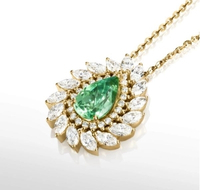
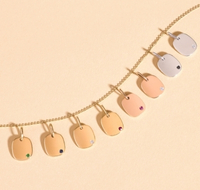
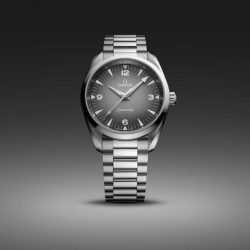
 GARMIN FENIX 8
GARMIN FENIX 8
.jpg)
.png)
